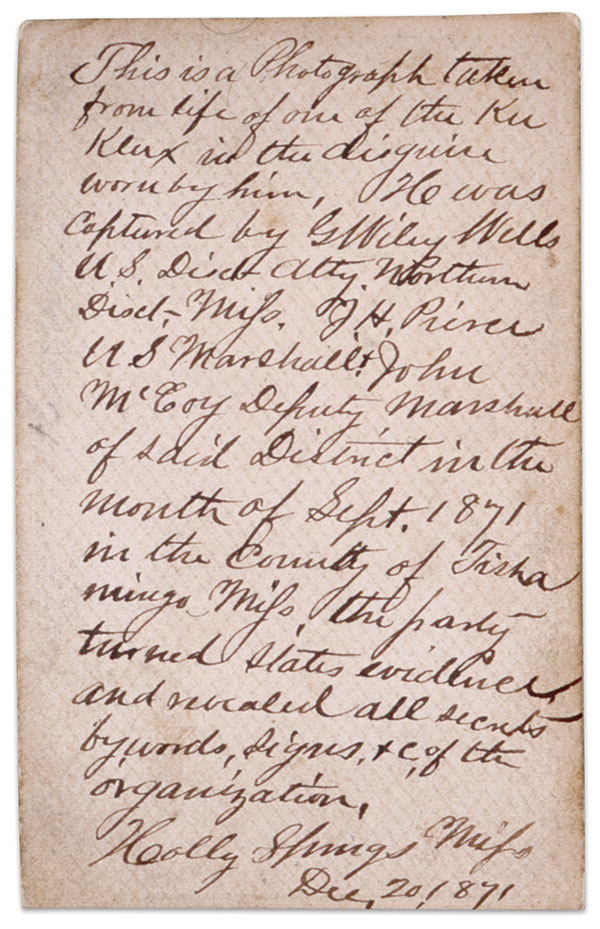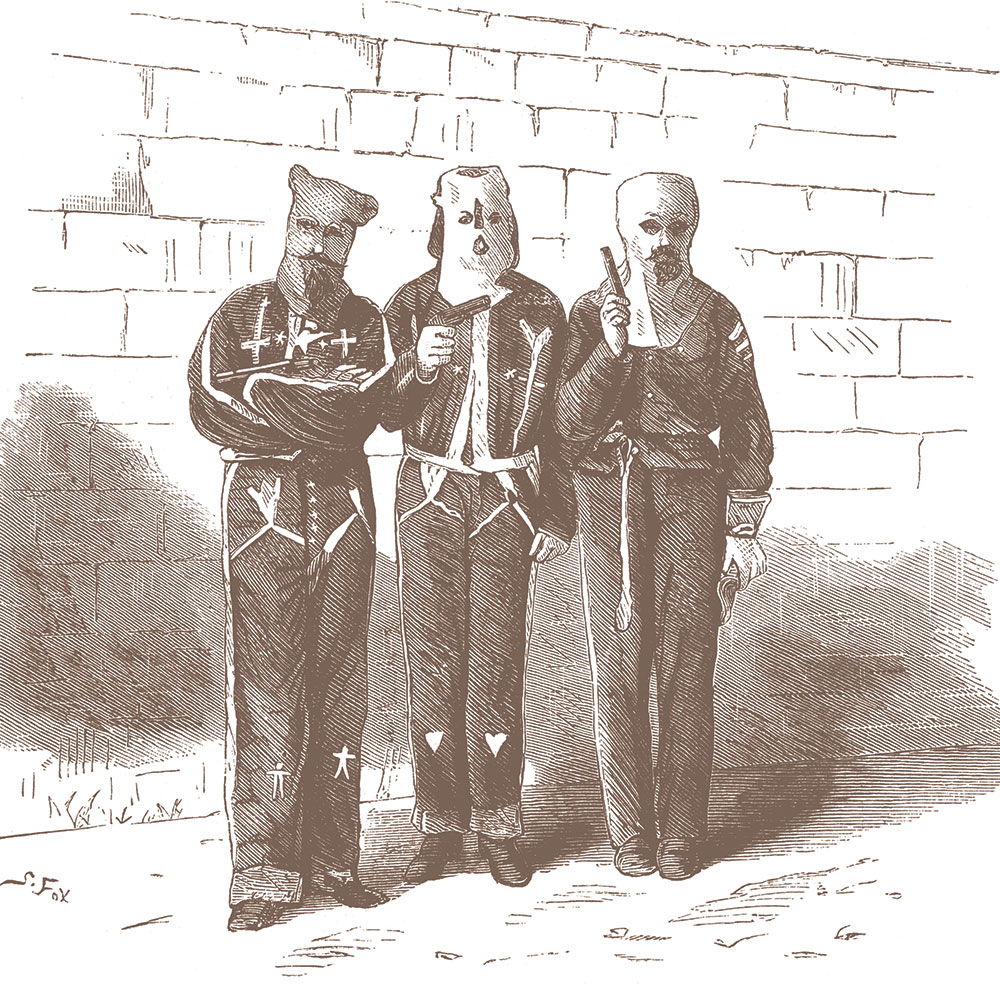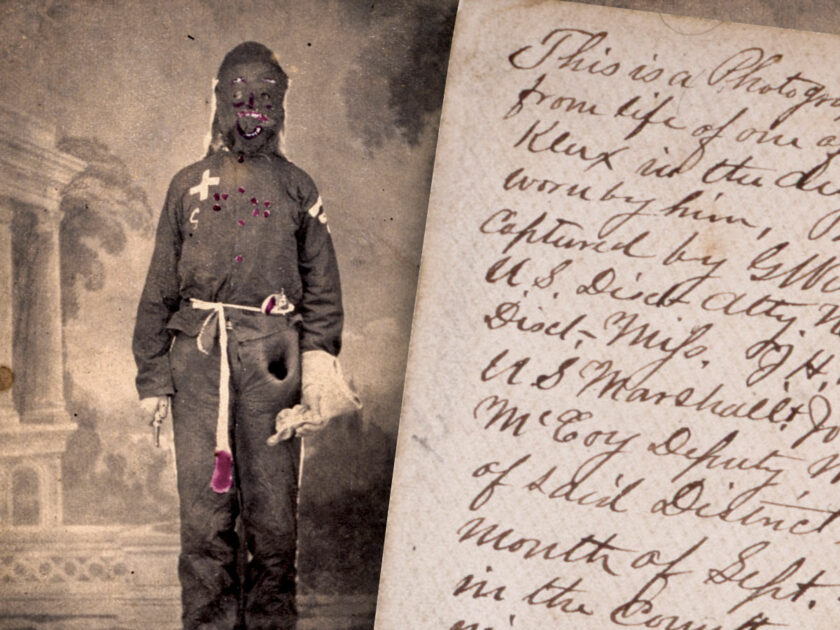A Ku Klux member, disguised to conceal his identity and intimidate citizens, stands against a backdrop painting of a tranquil scene. The gun he carries adds to his menacing look. The portrait, taken after his capture by law enforcement in Tishomingo County, Miss., in September 1871, was used as evidence of terrorism by Americans against Americans.


Tishomingo County was a hotbed of activity for the Ku Klux and other groups during Reconstruction, with numerous killings, whippings and other violence against Blacks, sympathetic Whites and public officials.
Three officers received credit for the capture: Guilford Wiley Wells (1840-1909), formerly lieutenant colonel of the 19th New York Cavalry, served as U.S. District Attorney for the Northern District of Mississippi, U.S. Marshal James H. Pierce and Deputy John McCoy.
The officers were empowered by federal laws. Five months earlier, in April 1871, President Ulysses S. Grant signed new legislation enforcing civil rights provisions of the 14th Amendment to the Constitution. The Enforcement Act of 1871 gave law enforcement powerful tools to combat domestic terrorism. In the early 20th century, it became known as the Ku Klux Klan Act.

These three Ku Klux members, pictured on the cover of the Jan. 27, 1872, issue of Harper’s Weekly, were also captured by Wells, Pierce and McCoy in September 1871. The trio were indicted for the attempted murder of a Tishomingo County family. Military Images.
The outcome of this Ku Kluxer is detailed on the back of the photograph’s mount in a note dated Holly Springs, Dec. 20, 1871: “the party turned states evidence and revealed all secrets by words, signs, &c of the organization.”
SPREAD THE WORD: We encourage you to share this story on social media and elsewhere to educate and raise awareness. If you wish to use any image on this page for another purpose, please request permission.
LEARN MORE about Military Images, America’s only magazine dedicated to showcasing, interpreting and preserving Civil War portrait photography.
VISIT OUR STORE to subscribe, renew a subscription, and more.

